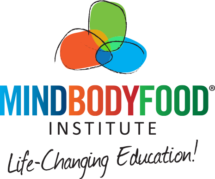When you start working with coaching clients (practice or paying), you may have a few clients who don’t follow through on agreed actions.
Or, you may find yourself not following through on your own intentions as you strive to implement new changes into your daily life.
If you prepare for and approach actions steps with these 6 key considerations in mind, you’ll have far less clients not following through on their agreed actions!
And you just might find it easier to stick to your own action steps too…
1. Minimise overwhelm
Most people don’t keep the brain in mind and completely overwhelm it with way too many tasks instead of focusing on small, consistent, doable steps.
The first step to combatting this issue is to remember not to overwhelm the client (or yourself) with way too many action steps than the brain can handle. Less is More!
Change starts with an internal shift that translates into one new thought or action. Focusing on one new action at a time builds confidence and self-belief, which is much more supportive than feeling like you can’t keep up with so many new changes, therefore inevitably stop and end up feeling like a failure.
2. The power of ‘why’
The brain prefers familiarity and safety – it doesn’t like the unknown of new things it doesn’t have any meaningful motivation to want to do!
Your client is the only person who can bring meaning to their goals and intentions for change.
The meaning they attach to a goal is the all-important reason that they want change in the first place – how will it benefit them, what does it mean to them, how will their life, or relationships, or health be better because of this change? What will achieving this goal allow them to do that they can’t do now?
What makes having this change worth taking action and feeling momentarily uncomfortable for?
Make sure your client knows exactly WHY the actions they’re choosing are worth where they want to go, and the time it will take to get there.
3. Guide, don’t dictate
Many untrained coaches forget that coaching isn’t telling people what to do or making decisions for the client i.e. you need to do this, I want you to do that this week…!
Who likes being told what to do with their own lives? Not me!
Make sure that your client chooses their own actions steps because that’s their responsibility, along with the responsibility of showing up and doing what they say they will between sessions.
4. Maximise strengths
Every person possesses specific skills and strengths that have been earned and developed throughout their individual life experiences. Whether personal or professional, you can help bring these attributes into focus for your client to benefit.
Connect your client with their incredible strengths and skills by utilising various coaching and positive psychology tools. A strengths audit can highlight the clients’ undeniable abilities across various environments. Assessing their proudest moments and what they’ve learned from them can bring specific skills to light.
With their strengths freshly (re)discovered you can empower the client with undeniable proof of what they’re actually capable of.
Never underestimate just how qualified your clients really are in changing their lives. They simply might not know it or believe it yet.
5. The client chooses, not you
Encourage the client to find solutions and choose their own action steps.
Your client must be able to see themselves doing those actions at times that suit them, and most importantly, because they chose the actions steps that they are willing to do first!
You, the coach, can then help them to identify potential obstacles with the support, awakening of strengths and self-belief needed to problem-solve and overcome them ahead of time.
BUT… the client must ultimately choose what actions they will commit to otherwise they won’t be invested in doing them!
6. Small steps, big leaps
While it’s important to identify the overall goal to determine “Where are we going?”, what’s more important is to break down that overall aim into daily mindset and behavioural actions that will move the client consistently towards their intended outcome.
Help your client identify the new behaviours and thought patterns that they’ll need to learn and adopt. Encourage them to choose one small action that seems the most doable to help them today. Then, as they create or swap these new habits, help them build upon them over time. This is also known as ‘habit stacking’.
Focus on weekly mindset or behaviour change goals and help the client utilise their current strengths and skills to problem-solve obstacles and support themselves to ACT today!
Instead of reasons they can’t, help them focus on reasons why they CAN!
Lastly, remember to help them celebrate the small steps. This pause of acknowledgement increases self-confidence and renews commitment to daily action by anchoring the actions to memory and reinforcing positive regard.

Small, consistent, repetitive actions lead to new neural pathways and eventual new associations and automatic habits…
It’s the BEST way to gradually instil permanent new habits that support long-term change without overwhelm or emotional pushback.
Need industry-recognised, well-rounded and researched life coach certification training that focuses on client-centred coaching with a holistic lens? Take a look at our most popular Holistic Life Coach & Mind-Body Practitioner certification HERE!
Featured image by Christina @ wocintechchat.com on Unsplash.
Author:
Viki Thondley
Viki Thondley-Moore is an Integrative Holistic Counsellor, Brain-Based Coach, Clinical Hypnotherapist, Mind-Body Somatic Practitioner, Wellness Coach, Meditation Teacher, Educator and Disordered Eating Specialist. Viki is founder of MindBodyFood and Founder/Director of the MindBodyFood Institute.
DOWNLOAD OUR COURSES GUIDE
Learn More About Our Course Offerings and Discover Which New Wellbeing Career Best Suits Your Passion!








